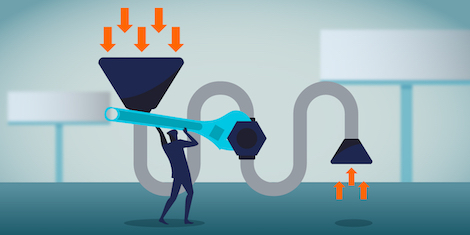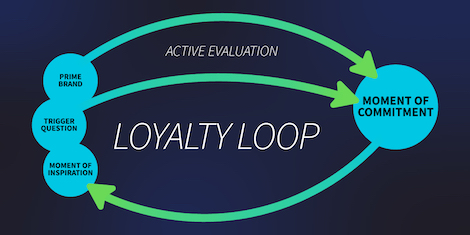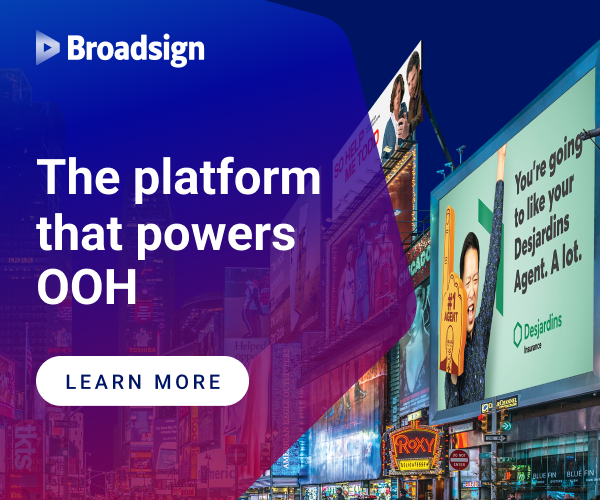Guest Contributor, James Munnerlyn
Digital marketers, media planners/buyers, and marketing managers that rely on paid digital advertising are up against a wall.

Your company relies on you to drive profitable advertising—but that positive ROI is getting tougher and tougher to deliver on:
- Digital ad costs are going up (check your Facebook CPMs over time for proof of this).
- Banner burnout is real, and more prevalent now than ever as people are trying to spend less time on-screen.
- Your customers are revolting against the massive growth in ecommerce during the pandemic by flocking to the physical—from brick-and-mortar stores to tactile media.
They’re ignoring you online and changing the station on TV or the radio. To get your advertising to stand out, you need to meet your audience in their physical space. How do you build that into your marketing strategy?
For starters, we need to upgrade our thinking about the consumer journey…
From Funnels to Loops: Reworking the Consumer Journey
Traditionally, the consumer journey has been understood through the model of the marketing funnel. The problem is, the concept behind the funnel is 120 years old: it was invented in 1898 by a man named Elias St. Elmo Lewis, via the slogan “attract attention, maintain interest, create desire, get action”.
Over the last few years, marketers have reimagined the marketing funnel as a loop (referred to as a Loyalty Loop). One model in particular uses language that reorients the user’s thinking from being brand-centered to being customer-centered:

Let’s break this down:
- The customer has a Moment of Inspiration, where he or she is inspired to seek out a solution to a problem
- Immediately after the Moment of Inspiration, the customer has a Trigger Question (a question about how to solve their problem)
- A Prime Brand, the first option to help solve the problem, pops into his or her mind; in some cases, this could be where he or she goes to search out solutions, such as Google
- The customer then goes through an Active Evaluation phase, where they consider all of their options, do more research and add or subtract brands from their Prime Brand list
- Finally, he or she reaches a Moment of Commitment, where he or she trades money, time, or information for something
How Does This Help You Get More Attention?
We began this article discussing the challenges faced by marketers who are struggling to reach audiences who are increasingly prioritizing the physical over the digital. So how does switching our thinking from funnels to Loyalty Loops help shape our marketing strategies to get in front of customers?
Funnel thinking is brand-centered: it means we approach consumers with the intent of ‘raising awareness’ about our brand to drive traffic into the top of the funnel.
The Loyalty Loop is customer-centered: it puts the emphasis on how real people perceive the world and start to think about decisions. It starts with a Moment of Inspiration, a moment of emotion that leads to action.
Here’s the value play for you as a marketer: if you can craft a Moment of Inspiration for your customers, one that emotionally connects with them and inspires them to action, you have the potential to tighten the Loyalty Loop—to shorten the distance between the Moment of Inspiration and the Moment of Commitment.
The tighter the Loyalty Loop becomes, the more chance you have of not just becoming their Prime Brand, but also their only brand, the one they immediately turn to when they experience another Moment of Inspiration.
An Advertising Format That Packs an MOI Punch
We said at the beginning that if you’re a digital marketer, to stand out and get your customers’ attention you need to get into their physical space.
One of the best ways to do that is with out-of-home (OOH) advertising.
Like with most marketing, out-of-home works best when you understand how people engage with it.
Out-of-home engages people when they’re on the move. They’re distraction-free, off their devices, and paying attention to their surroundings. Research has found that people interact with out-of-home at a much higher rate than most other types of advertising, meaning you have the ability to create a much bigger impact.
This lends itself to creating great moments of inspiration, with attention-grabbing and emotionally-compelling messaging.
Out-of-home has traditionally been a strong brand awareness medium, triggering recall and recognition while grabbing attention. Household brands have leveraged this effectively: a billboard with brand colors and logo is all it takes to trigger a moment of inspiration for someone. For smaller brands, the long commitment and complex buying process of out-of-home were harder to justify when the public wasn’t already familiar with the brand name.
But the advent of digital out-of-home (DOOH) has made the medium more dynamic and interactive. Programmatic digital out-of-home (pDOOH), the use of AI to automatically match creative with available ad inventory, is taking OOH to the next level, making ad buying and placement easier than ever (while increasing creative flexibility).
From dayparting (customizing creative to specific times of day) to contextual advertising (customizing creative to what’s occurring at the moment, such as the weather), pDOOH offers media buyers the opportunity to treat OOH just like they would any online advertising.
With digital out-of-home, the value and impact of OOH gets a facelift: what was once primarily valuable for brand awareness can now also be used for traditionally bottom-of-the-funnel tactics as well, from driving direct actions (website and store visits, purchases) to offering precision targeting, tracking, and analytics.
This two-pronged value proposition of OOH gives it a unique advantage in tightening the Loyalty Loop by creating Moments of Inspiration. But, as with all tactics, it’s best used as part of an omnichannel approach: billboards have the power to boost all other forms of advertising in your stable, from TV to display ads and everything in between.
Building a Campaign That Drowns Out the Competition
If you’ve never used out-of-home advertising before, considering adding it to your marketing mix might seem farfetched. But imagine the impact of doing things just a little bit differently than your competitors:
An executive is driving home after an exhausting day at work. His team has missed three client deadlines just this month: their current process for managing client projects is just not working for them. This was made abundantly clear by today’s client call about the missed deadline (a customer-driven MOI).
He knows he needs a new tool to help manage these projects, but he’s too overwhelmed to spend what he perceives as too much of his valuable time seeking out and vetting a decent solution. He spent some time with his Prime Brand, Google, doing an initial search, but a lot of the solutions he found all sound the same. They all offer free demos, but he knows if he signs up for any of them he’s agreeing to perpetual bombardment via email and phone calls for what essentially amounts to a sales pitch.
As he’s mulling over his problem, he passes a billboard for your project management software. You know how everyone else in the project management SaaS space approaches the challenges of managing client projects—and you know it’s not the best way. So you’ve built your SaaS product with a different approach in mind.
Rather than push for sales with white papers and free demos, however, you’ve written a series of reports that help executives like our prospect better manage client projects (naturally, your SaaS product takes all the hassle out of the process, but a prospect could still see improved results by implementing your unique approach themselves).
So instead of advertising your product on the billboard, you’re promoting the unique idea behind the approach your product takes. When our executive sees this, it triggers a new line of thinking: would this be a better way of managing projects? (A brand-driven MOI.)
As the executive drives past your board, your geofencing campaign that is based around your board is triggered, sending a mobile ad to his phone. As he pulls in his driveway, he sees the ad, which matches the creative from your billboard (creating brand consistency).
The ad invites him to request a physical packet, including one of the reports you’ve produced, that promises to help him try your unique approach to managing client projects. When he does, he receives a physical direct mail piece filled with valuable content. Naturally, you’ve included a QR code in the booklet where our prospect can easily get to a landing page to sign up for a free demo.
Your tactics and messaging have stood out to the executive, isolating your advertising from that of your competitors, while reinforcing the positioning of your product’s unique approach to project management. You’ve tapped into his Moment of Inspiration, answered his Trigger Question, and become his Prime Brand, all resulting in a tightened Loyalty Loop where you get exclusive access to guide his customer journey.
All thanks to a marketing campaign built around an out-of-home format, intelligently integrated into an omnichannel approach designed to disrupt the prospect’s (dreaded) Active Evaluation phase.
For more advice on integrating out-of-home into your marketing plans, follow @Adkom on LinkedIn.




Follow DailyDOOH